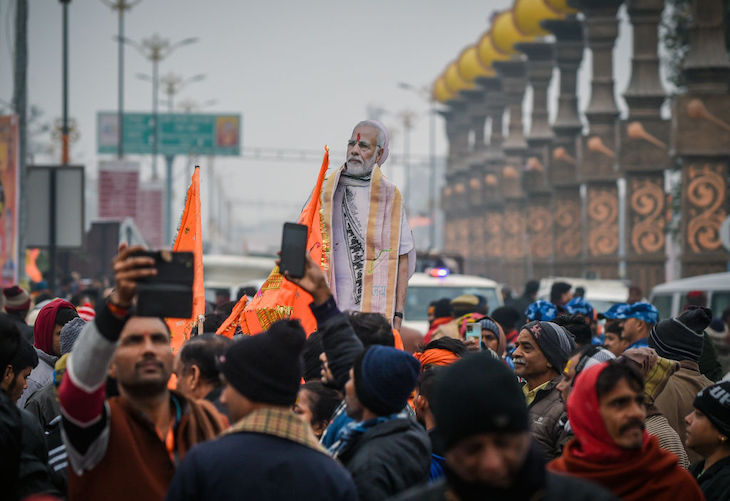The religious and political symbolism was unmistakable, as the Indian prime minister Narendra Modi led the consecration of a controversial new Hindu temple in Ayodhya, in Uttar Pradesh state, built on the ruins of a 16th century mosque.
The Babri Masjid was torn down by Hindu nationalist mobs in 1992, sparking riots across the country that killed about 2,000 people, most of them Muslim. In 2019, India’s Supreme Court ruled that a temple could be built on the site, a decision that was roundly criticised by India’s Muslim minority.
Modi spoke of India being at ‘the beginning of a new era’
The festering wounds from this long-running dispute reverberate to this day. The opening ceremony – even before construction of the temple is complete – amounts to a calculated statement by Modi. It marks the latest and most significant step in his mission to transform India from a secular democracy into a Hindu state. It also honours a vow made by the ruling Bharatiya Janata Party to build a new temple on the disputed Ayodhya site, a pledge that helped pave its way to power.

Get Britain's best politics newsletters
Register to get The Spectator's insight and opinion straight to your inbox. You can then read two free articles each week.
Already a subscriber? Log in







Comments
Join the debate for just £1 a month
Be part of the conversation with other Spectator readers by getting your first three months for £3.
UNLOCK ACCESS Just £1 a monthAlready a subscriber? Log in